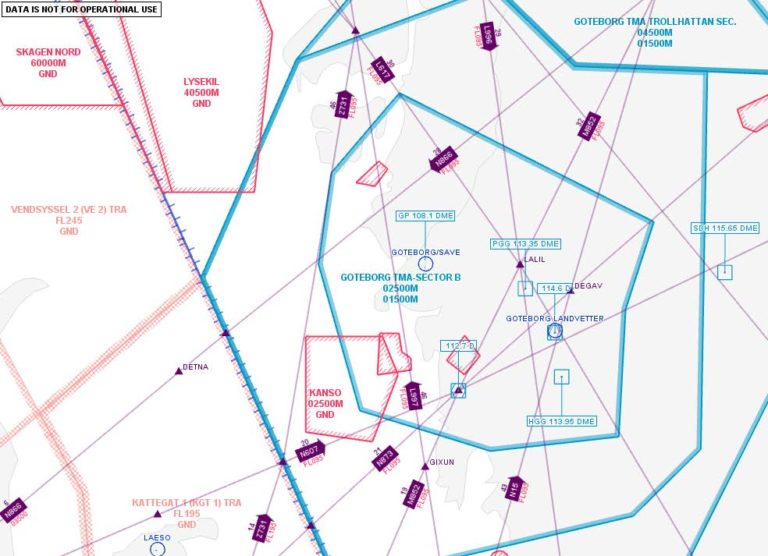Carmenta Engine 5.12
This version introduces Hardware Accelerated Radar Intensity Displays, a new .NET Core Compatible API, improved support for Thematic Data Sources, more flexible Corridor Generation and much more.
Hardware Accelerated Radar Intensity Displays
The new RadarVideoLayer makes it possible to create radar intensity displays by directly passing in the scan line data. The functionality complements our existing support for high-performance display of radar plots.
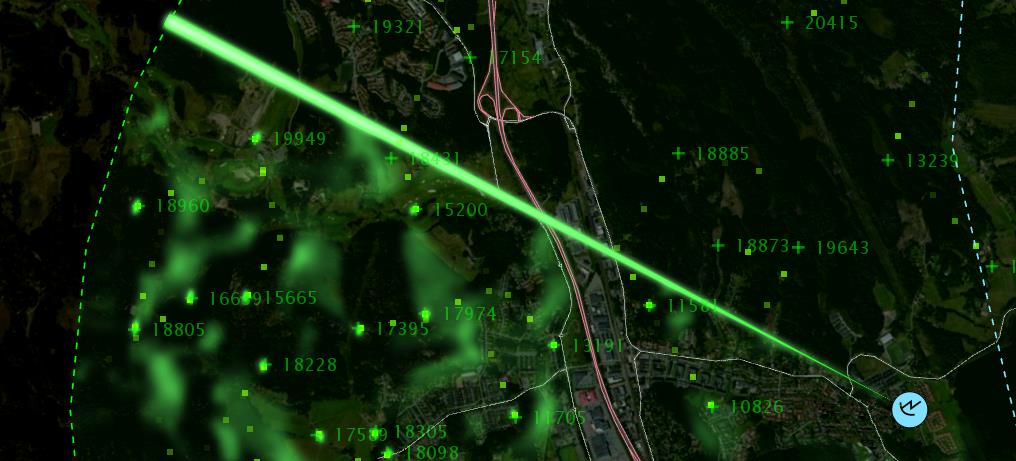
We have carefully designed the API to the new functionality to minimize the overhead when passing in scan lines, ensuring that the radar video can be updated in real time without slowing down the application.
The new hardware accelerated radar intensity displays are supported on all platforms (Windows, Linux and Android™).
New .NET Core Compatible API
Carmenta Engine 5.12 introduces a new .NET API that is compatible with .NET Standard 2.0 or later. This makes it possible to target .NET Core, Microsoft’s new, cross-platform .NET implementation. The new API is provided as NuGet packages and is supported on both Windows and Linux.
An included programming sample shows you how to use .NET Core and ASP.NET Core to create a Carmenta Engine powered geospatial micro service.
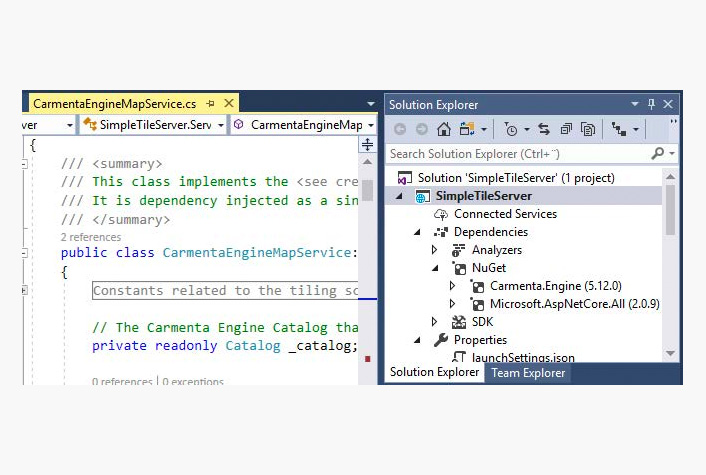
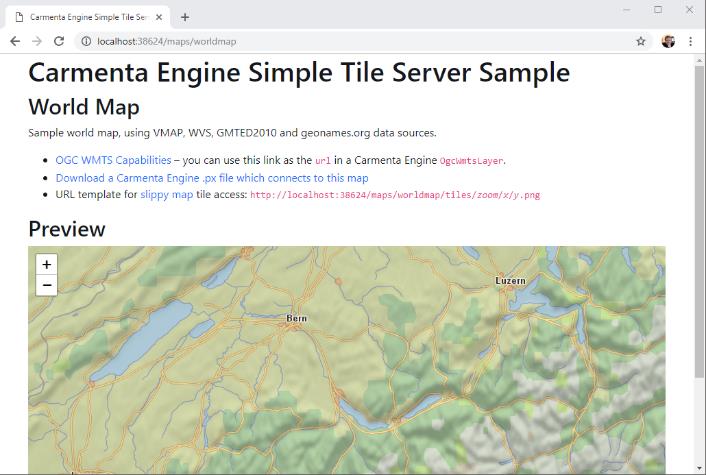
Improved Support for Thematic Data Sources
It is now possible to access so-called Raster Attribute Tables when reading thematic data such as land use databases.
The tables can contain additional information about the data classes such as human readable class descriptions or average heights for different vegetation classes.
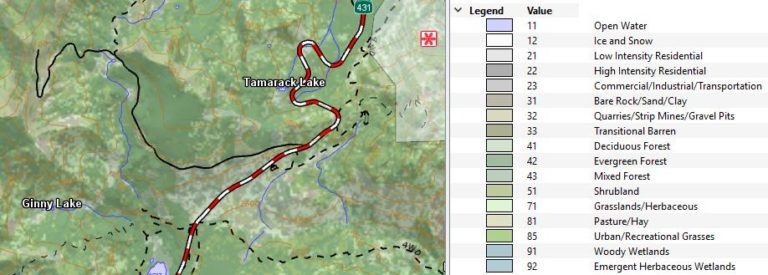
Additionally, the VerticalProfileOperator has been extended with new inputs for thematic raster data and will use it to generate profile lines and polygons that use the same color scheme as the raster.

More Flexible Corridor Generation
The two new operators CorridorOperator2D and CorridorOperator3D simplifies the task of generating corridor geometries around arbitrary lines.
The size, cross section, texturing etc. of the generated corridors is fully configurable.
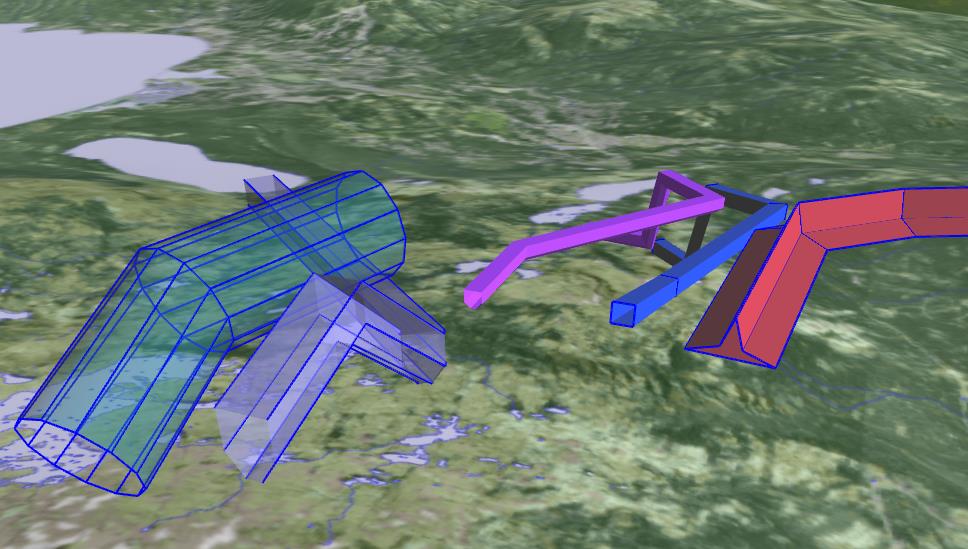
Other Notable Improvements
MVT and MBTiles Support
The new MvtDataSet component makes it possible to connect directly to web services serving Mapbox Vector Tile (MVT) data.
The new data set can also be used to read local vector tiles data from MBTiles files.
New Formats for 3D Models
The Symbol3D component can now be used to load 3D models directly from the COLLADA, OpenFlight, glTF and OBJ 3D formats.
This eliminates cumbersome model conversion work.
Hardware Accelerated Rendering Improvements
Applications built using WPF, the Windows Presentation Foundation, now benefit from a new rendering engine based on DirectX 11. Among other things, the new renderer improves the support for hardware accelerated effects.
Both the OpenGL and DirectX renderers will now use background threads to transfer information to the graphics card to enable an even more stable frame rate.
Improved OGC® WMTS performance
The OgcWmtsLayer component that is used to connect to OGC WMTS web services has significantly improved performance thanks to increased parallelism when loading map tiles.
New Aeronautical Chart Sample
A new map configuration sample shows how easy it is to use Carmenta Engine to create an enroute map presentation directly from ARINC 424 data.
